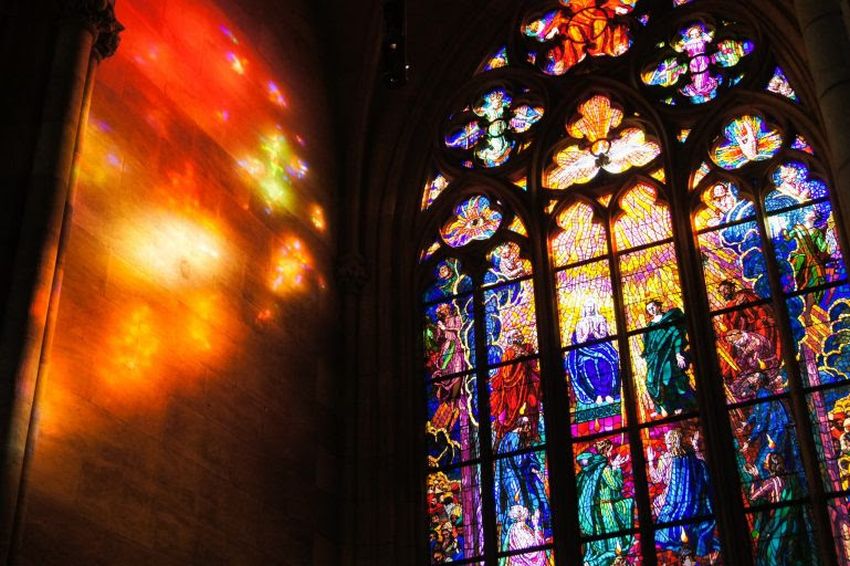
Dr Clarence Emersley was a small, bald man who sported wide-rimmed spectacles and walked with an unnaturally healthy spring in his step for a man his age. He had been a teacher his entire life and had loved it, which explained why he was still teaching past retirement age. The one thing I remember was his dazzling smile and an unbelievable sense of humour.
It stunned me how a man could reach a ripe old age and still view the world through the colours of a rainbow. When I completed the draft of my first book, I felt terribly insecure. I told myself that neither the book nor I were worthy of the statements the book contained. This led me to the ultimate question: was I really good enough?
It was at this point that I met Clarence. I was initially intimidated by his knowledge, education and mere presence. He spoke several languages, ranging from Aramaic to isiZulu, but what impressed me most was his humility.
Clarence had read my draft within two days. On the third day, I found myself seated at a student’s desk in his classroom. This amplified my nerves. The old man stared at me expressionlessly. “Mark, this is one of the most touching, insightful and inspiring books I have ever read. You have to get it published!” he exclaimed with a genuine and gracious heart. “The stories have made me think very hard about my faith and they have inspired me,” he said while looking at his feet. “Are you sure?” I asked. With a beaming smile, he searched my eyes and said, “Never underestimate what God can do through a simple book. The book is both simple and beautiful”. Not long after this wondrous meeting with this extraordinary man, my book was published.
Following a terrible fall at the school, Clarence health began to decline. His body no longer aligned with his mind and within months, Clarence was moving around the school in a wheelchair. Every day, like clockwork, he would arrive at school, driven by his wife, who showed nothing short of absolute loyalty and perfect love for her dear husband. The security guard would dutifully carry him to his wheelchair. Every day Clarence would hand over the sandwiches that his wife had made to the officer; an honest expression of their thanks and gratitude. The children would push him to class, fight to carry his satchel and dote on his every need. Clarence became weaker despite his mind appearing sharper than ever. One fateful night he departed from this world with a smile on his face and with a passport in hand. He then entered the Palace of the One he so ardently trusted; the One who had been so eagerly waiting to receive him at the gate.
The church was filled to capacity, chairs were carefully shifted into the aisles to make space for the throngs of admirers and friends who came to bid him farewell. As I sat in the pew, waiting for the service to begin, I was mesmerised by the spectacular images and colours of the stained glass windows that adorned the church. There were blues, hues and reds with beautiful characters that told a story of a divine love declared on a little lonely hill outside Jerusalem.
For a moment my mind drifted to the great cathedrals of Europe where the skilful tradition of stained glass originated. Stained glass windows rose in popularity during the mid-1100s when most churches were built in the Gothic style. In the medieval church, the Abbot Suger of St-Denis in France was undoubtedly its most famous patron. The windows became bigger and more beautiful, and they believed that the light that shone through the stained glass was nothing less than the manifestation of God Himself. These windows served two purposes: beauty and storytelling. The beauty emerged from the colours. They stimulated emotions and emphasised the narratives, provoking soul-searching intervention. The storytelling was enshrined in biblical themes and passages. It was in fact considered the poor man’s Bible, since during medieval times the poor were mostly illiterate, and even if they could read, they could not afford Bibles. The pictures in the stained glass windows depicted biblical events and therefore helped the poor to understand. Thus they served as sermons on their own, continuously reminding them of the Gospel.
Light poured through those window. The sunbeams, like the fingers of God reaching out, touched the coffin. It seemed to reflect off the coffin and gently touched the cross above the altar. For a moment there seemed to be an intimate love between the Creator and the old man in the box. The caressing light reflecting off the coffin spoke of an inexplicable, yet lovely bond between Clarence and his God. I sat there staring at this breathtaking sermon spoken in rays of light, saying so much more than any evangelist’s moving sermon ever could. The tears streamed down my face. I was moved to my very core.
In unison, the characters in the stained glass windows danced and seemed to celebrate and share in this breathtaking moment. They told a story of joy, sadness, despair, hope and ultimately divine love. I tried to analyse the sermon played out before me and then it dawned upon me: we are all stained glass windows. Yet, in our case, it’s not the light that shines from the outside that makes our panes beautiful, but the light from within. It is the sacrificial cross of Jesus, within us as Christians, that reflects off the stained glass windows of our soul. It not only tells the story, but shows the story to the world. As the light from the cross shines onto the stained glass windows of our soul, He makes the characters come to life to reveal to a dying world a magical story of His undying and never-ending love for us.
From that coffin, Clarence preached his most endearing and phenomenal sermon. My heart broke as I thought about how many, in the midst of their grief and pain, had missed it.
Stained glass windows are translucent (derived from the Latin word translucēre) which means “to shine through”; something Christians would do well to remember. When the world looks at us, they are meant to see through us, to see past the characters and radiant colours. They need to see a story and the source of the light that projects the story, the cross of Christ, with which we are one. Clarence, my dear and noble friend, what a sermon you preached on that day. You never said a word and yet you said so much. Through translucent, colourful windows, I saw God gently touch a broken world and the stained glass windows of my soul will never be the same again. Adieu, my friend; my beloved brother.
Please help us to keep on publishing news that brings Hope in Jesus:
>> Donate >> Become a Super Subscriber
VISIT OUR YOUTUBE CHANNEL: https://www.youtube.com/gatewaynews100
COMMENTING GUIDELINES
You are welcome to engage with our articles by making comments [in the Comments area below] that add value to a topic or to engage in thoughtful, constructive discussion with fellow readers. Comments that contain vulgar language will be removed. Hostile, demeaning, disrespectful, propagandistic and off-topic comments may also be moved. This is a Christian website and if you wish to vent against Christian beliefs you have probably come to the wrong place and your comments may be removed. Ongoing debates and repetitiveness will not be tolerated. You will also disqualify yourself from commenting if you engage in trolling.






